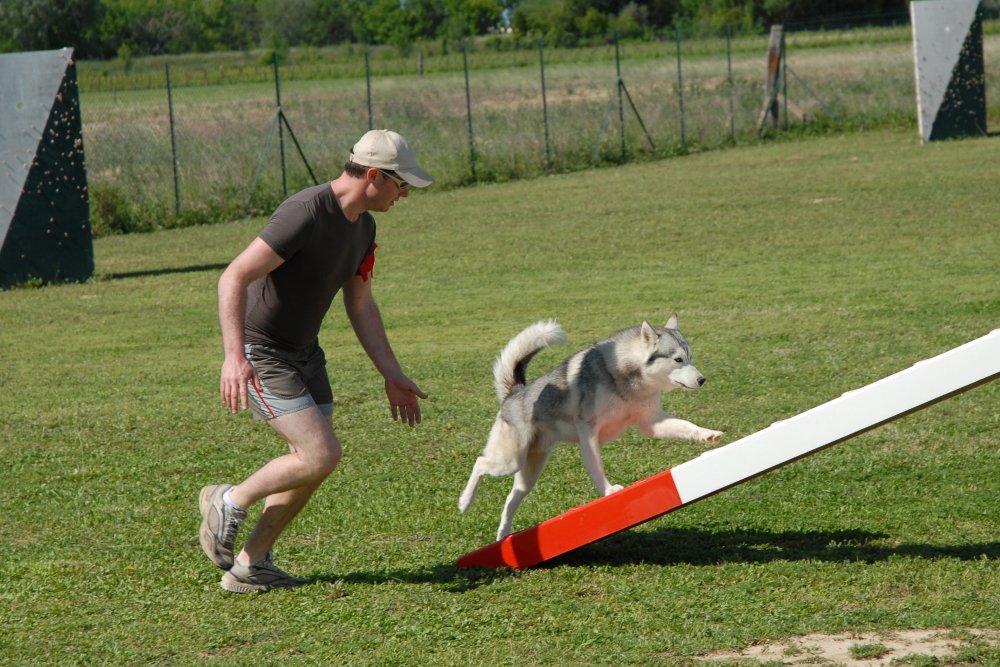Dog Training Psychology is fundamental in the pursuit of raising a well-behaved and content canine. Recognizing the psychological underpinnings that forge a robust bond is crucial. It’s about more than commands; understanding the mental landscape of your furry friend unlocks the door to more effective training methods. This exploration of Dog Training Psychology doesn’t just aim to strengthen your connection—it creates a nurturing environment for your pet to prosper. In this guide, we delve into the essential tactics such as positive reinforcement, transparent communication, and the cultivation of trust. Together, these elements pave the way for a fulfilling and happy union with your dog.
Understanding the Canine Mind
The Importance of Understanding Dog Behavior
To effectively train and connect with your canine companion, it is crucial to understand their behavior and how their mind works. Dogs have unique instincts, drives, and emotions that shape their behavior. By understanding these innate aspects of their nature, you can better communicate and address their needs.
Recognizing Canine Emotions
Dogs experience a wide range of emotions, just like humans do. They feel joy, fear, sadness, anxiety, excitement, and more. Recognizing and understanding these emotions is essential in building a strong bond with your dog. By paying attention to their body language, facial expressions, and vocalizations, you can gauge their emotional state and respond accordingly.
The Role of Communication in Dog Training
Communication is the foundation of any successful relationship, including the one you have with your dog. Dogs communicate primarily through body language and nonverbal cues. By learning to interpret and respond to these signals, you can effectively communicate your intentions, commands, and expectations to your furry friend. Effective communication is key to a harmonious and mutually satisfying training experience.
Positive Reinforcement Techniques
Using Rewards to Strengthen the Bond
Positive reinforcement is a powerful tool in dog training that involves rewarding your dog for desired behaviors. By rewarding your dog with treats, praise, or playtime when they exhibit the desired behavior, you strengthen the bond between you and your furry companion. Positive reinforcement techniques promote a positive learning environment, making training enjoyable for both you and your dog.
Effective Use of Treats and Toys
Treats and toys can be valuable tools in positive reinforcement training. Choosing high-value treats that your dog finds particularly enticing will increase their motivation to learn and perform desired behaviors. Toys can also be used as rewards during play-based training sessions. By using treats and toys strategically, you can make training sessions fun, engaging, and rewarding for your dog.
Clicker Training – A Powerful Tool
Clicker training is a popular positive reinforcement technique that uses a small handheld device called a clicker to signal to your dog that they have performed the desired behavior correctly. The click serves as a clear marker, indicating to your dog that a reward is imminent. Clicker training allows for precise timing and can be especially effective for teaching new behaviors, shaping complex sequences, and strengthening the bond between you and your dog.
Establishing Trust and Respect
Creating a Safe and Nurturing Environment
Building trust with your dog starts with creating a safe and nurturing environment. Providing a comfortable and secure space for your dog to rest, eat, and play will help them feel at ease. Ensuring they have access to fresh water, nutritious food, and regular exercise is essential for their physical and mental well-being. By meeting their basic needs, you establish a foundation of trust and set the stage for a positive training experience.
Consistency and Routine: Keys to Trust
Consistency and routine are crucial for dogs to feel secure and develop trust. Dogs thrive on predictability and knowing what to expect. Establishing consistent daily routines for feeding, exercise, and training sessions gives your dog a sense of structure and stability. Consistency in your commands, expectations, and responses will also help your dog understand what is expected of them and build their confidence in you as their leader.
Setting Clear Boundaries and Expectations
Dogs feel secure when they know their boundaries and understand what behaviors are acceptable. It is important to set clear boundaries and expectations from the beginning of your relationship. Consistently enforcing these boundaries through positive reinforcement and redirecting unwanted behaviors will help your dog understand and respect the rules. Clear communication and consistent reinforcement of these expectations will strengthen your bond and foster a harmonious relationship.
Building Empathy and Connection
The Power of Empathy in Dog Training
Empathy is the ability to understand and share the feelings of another. Developing empathy towards your dog allows you to connect on a deeper level and anticipate their needs and emotions. By putting yourself in their paws, you can better understand why they behave the way they do and respond in a compassionate and understanding manner. This empathic connection helps build trust and a stronger bond with your furry friend.
Recognizing and Responding to Your Dog’s Needs
Every dog has unique needs and preferences. By observing and understanding your dog’s body language, you can recognize when they are experiencing discomfort, fear, or stress. Responding to their needs with patience, reassurance, and appropriate action builds their trust in you as their caregiver and trainer. Meeting their physical, emotional, and social needs strengthens the bond between you and your dog.
Developing a Strong Emotional Connection
Building a strong emotional connection with your dog requires time, effort, and understanding. By consistently providing love, affection, and positive reinforcement, you show your dog that you are a reliable and caring companion. Spending quality time together, engaging in activities they enjoy, and participating in training exercises further deepens your emotional connection. When your dog feels loved and connected to you, they will be more motivated to learn and please you.
Socialization and Exposure
The Role of Socialization in a Dog’s Psychological Health
Socialization is the process of exposing your dog to various people, animals, environments, and stimuli to teach them appropriate behavior and create positive associations. Early socialization is especially important for puppies, as it helps them develop into well-rounded and confident adult dogs. Socialization ensures that your dog can navigate new situations and interact with others safely and with ease, ultimately contributing to their psychological well-being.
Gradual Exposure to New Environments and Stimuli
Introducing your dog to new environments and stimuli should be done gradually and at their own pace. Too much exposure too quickly can lead to fear and anxiety. Start by exposing your dog to new environments or stimuli from a distance, gradually decreasing the distance as they become more comfortable. Positive reinforcement during these exposures helps your dog build positive associations and develop confidence in unfamiliar situations.
Positive Experiences with Different People and Animals
Exposing your dog to a variety of people and animals in a positive and controlled manner is essential for their socialization. Arrange playdates with well-behaved dogs, introduce them to friendly individuals of various ages, and expose them to different environments such as parks or pet-friendly establishments. Each positive experience helps your dog develop better social skills, decreases the likelihood of fear-based aggression, and fosters a positive and friendly demeanor.
Managing Fear and Anxiety
Understanding Fear-Based Behavior
Fear-based behavior in dogs is often exhibited through avoidance, aggression, or withdrawal. Understanding the root causes of fear can help you address and manage it effectively. Fear can stem from past traumatic experiences, lack of socialization, or genetics. Patience, positive reinforcement techniques, and creating a safe and supportive environment are essential components in helping your dog overcome their fears and build confidence.
Counter-Conditioning and Desensitization Techniques
Counter-conditioning and desensitization are techniques used to change your dog’s emotional response to fear-inducing stimuli. By gradually exposing your dog to triggers in a controlled and positive way, while rewarding calm behavior, you can help them develop more positive associations. These techniques rewire their responses from fear to relaxation, allowing them to cope with previously anxiety-inducing situations.
Building Confidence through Training
Training exercises that focus on building your dog’s confidence can be instrumental in managing fear and anxiety. Engaging in agility courses, nose work, or obedience training helps your dog develop skills and overcome challenges, boosting their self-assurance. As they conquer new tasks, their confidence will grow, and their fear and anxiety will diminish. Building confidence through training strengthens their overall psychological well-being.
Adapting Training Methods for Different Personalities
Tailoring Techniques for Shy and Reserved Dogs
Shy and reserved dogs require gentle and patient training methods. It is crucial to create a calm and low-stress environment for them. Slowly introduce new experiences and people, always ensuring positive associations and rewards. Consistency, gradual exposure, and encouragement will help shy dogs come out of their shells and build their confidence.
Addressing Dominance in Strong-Willed Dogs
Strong-willed dogs require assertive leadership and consistent boundaries to prevent dominance-related issues. Establish clear rules and expectations from the beginning and reinforce them with positive reinforcement. Use techniques that promote respect rather than dominance, such as rewarding desired behaviors and redirecting unwanted behaviors. By providing consistent guidance and structure, you can help strong-willed dogs become well-behaved companions.
Motivating and Engaging Energetic and Playful Dogs
Energetic and playful dogs thrive on physical and mental stimulation. Incorporate activities that channel their energy and mental focus, such as agility training, retrieving games, or puzzle toys. Use high-energy play sessions as rewards during training to keep them motivated and engaged. Providing outlets for their natural instincts and energy levels will help them become well-rounded and content companions.
The Role of Body Language and Nonverbal Cues
Understanding Canine Body Language
Dogs primarily communicate through body language. Understanding their signals can help you interpret their needs, emotions, and intentions. Whether it’s a wagging tail indicating excitement or a lowered head expressing submission, familiarizing yourself with their body language allows for effective communication and prevents misunderstandings. Paying attention to their ears, tail, eyes, and posture will give you valuable insights into their feelings and facilitate a stronger bond.
Using Nonverbal Cues to Communicate and Bond
Your body language and nonverbal cues play a significant role in communicating with your dog. Using consistent hand signals, facial expressions, and body movements alongside verbal commands helps reinforce your verbal communication and enhances your bond. Dogs are highly perceptive to these nonverbal cues and respond best to clear, confident, and positive signals.
Coordinating Movements and Signals with Your Dog
Coordination between you and your dog during training enhances your connection and understanding. When teaching new commands or behaviors, your movements should be deliberate and consistent. Ensuring that your posture, tone of voice, and timing align with your commands will provide clarity to your dog and facilitate learning. By synchronizing your movements and signals with your dog, you create a harmonious bond built on trust and effective communication.
Overcoming Training Challenges
Dealing with Behavioral Issues: Aggression, Separation Anxiety, etc.
Training challenges can arise when dealing with behavioral issues such as aggression or separation anxiety. It is important to approach these challenges with patience, understanding, and professional guidance when necessary. Identifying the root causes of the behavior, creating structured training plans, and using positive reinforcement techniques tailored to the specific issue can help address and overcome these challenges effectively.
Frustration and Patience: Key Factors in Success
Training a dog takes time and effort, and it is natural to experience frustration along the way. However, maintaining patience is crucial for successful training. Dogs respond best to calm and patient handlers who provide clear guidance and consistent reinforcement. By managing your own frustrations and staying positive, you create an environment that fosters learning, cooperation, and a stronger bond.
Seeking Professional Help When Necessary
In some cases, seeking professional help from a certified dog trainer or behaviorist may be necessary. If you are struggling with severe behavioral issues or are unsure how to handle a specific situation, consulting with an expert can provide invaluable guidance. A professional can tailor a training plan specific to your dog’s needs, ensuring that you address the root causes of the issue and create a safe and effective training environment.
Continuing Education and Lifelong Training
Ongoing Training to Strengthen the Bond
Training should be seen as an ongoing process throughout your dog’s life. Engaging in regular training sessions even after the initial training phase helps refresh their skills, maintain good behavior, and reinforce the bond between you and your dog. Ongoing training sessions also provide mental stimulation, preventing boredom and unwanted behaviors.
Exploring Advanced Techniques and Activities
Once you have established a foundation of basic training and behavioral understanding, you can explore advanced techniques and activities. Advanced obedience training, agility courses, or participating in dog sports can provide new challenges and opportunities for growth. Engaging in these activities together strengthens the bond, builds trust, and deepens the connection between you and your dog.
The Benefits of Lifelong Learning for Dogs and Owners
Lifelong learning benefits both dogs and their owners. Continually expanding your knowledge of dog behavior, training techniques, and understanding canine psychology allows you to better meet your dog’s changing needs as they age. Ongoing education deepens your bond, enhances your training skills, and ensures a happy and fulfilling life for both you and your four-legged companion.
In conclusion, understanding the psychological aspects of dog training is vital for building a strong bond with your furry friend. Recognizing their emotions, communicating effectively, and using positive reinforcement techniques create a positive learning environment. Establishing trust, empathy, and connection lays the foundation for a healthy and fulfilling relationship. Socialization, managing fear and anxiety, and adapting training methods for different personalities further contribute to their well-being. By utilizing body language, overcoming training challenges, and engaging in lifelong learning, you and your dog can experience a lifelong bond based on love, trust, and understanding.



